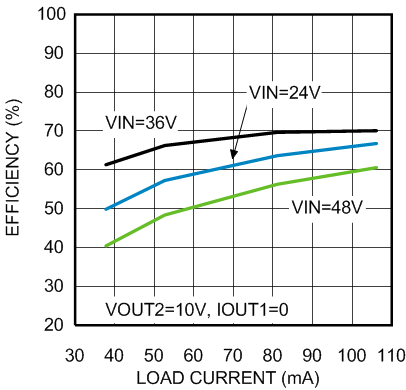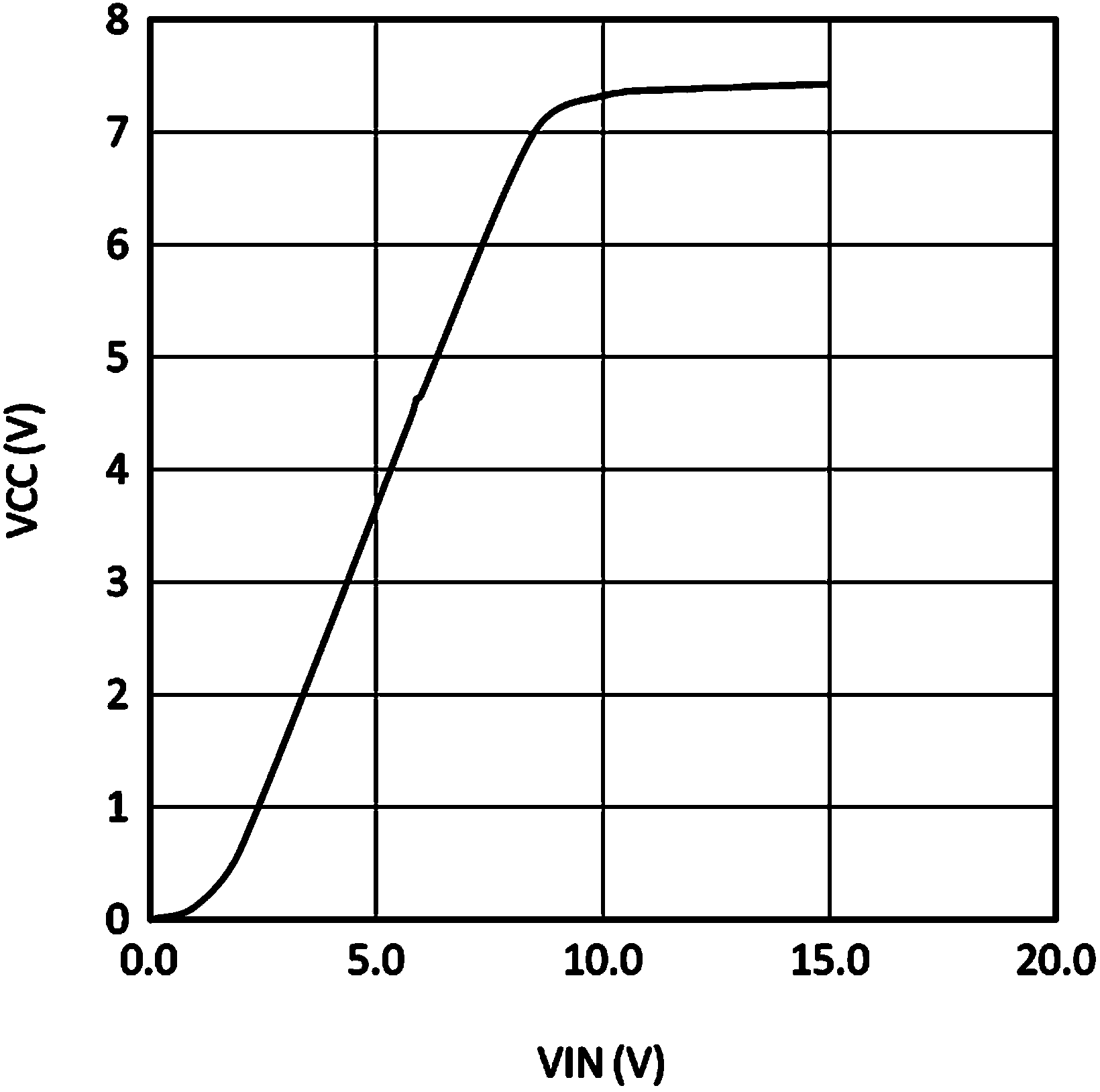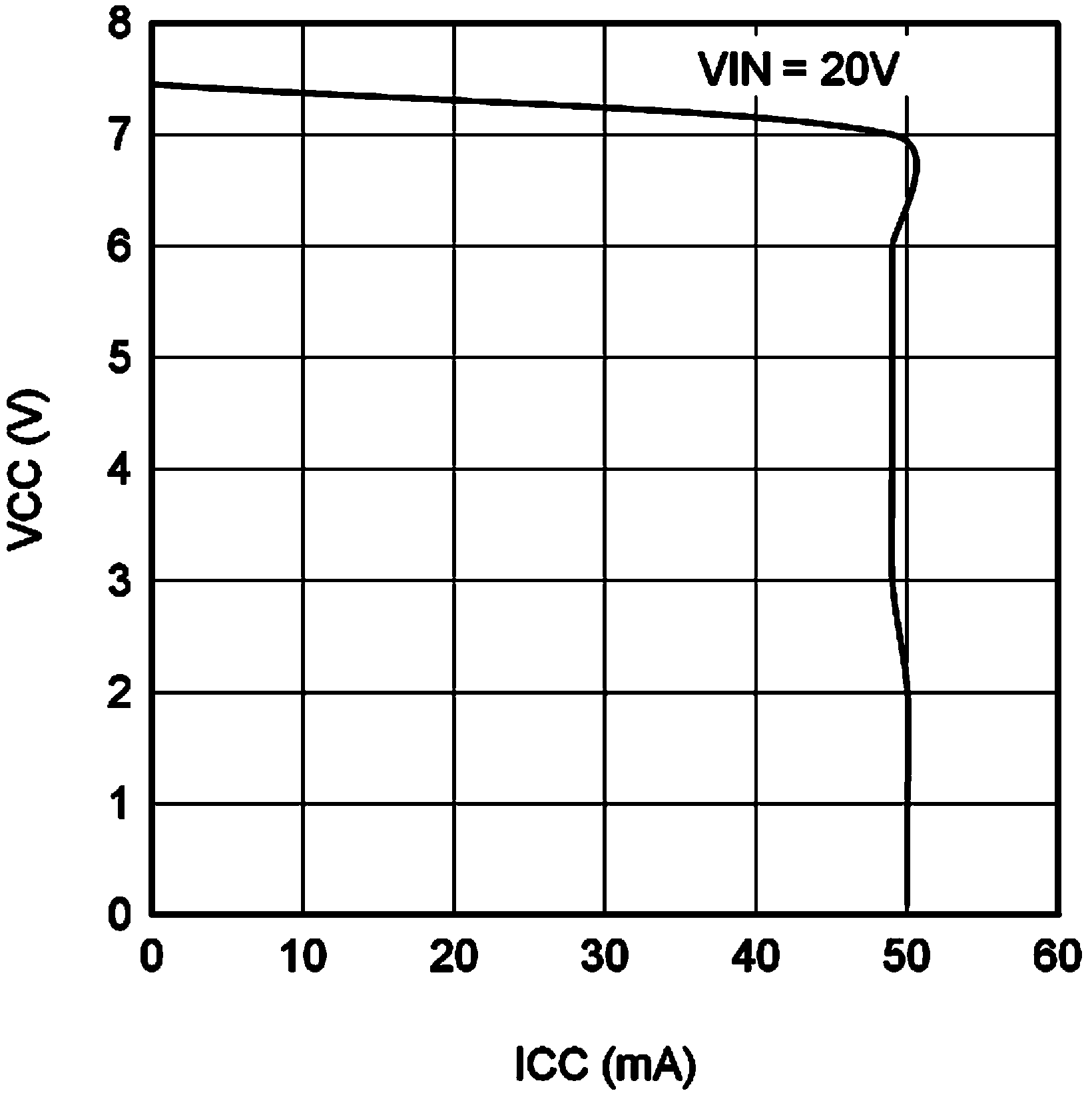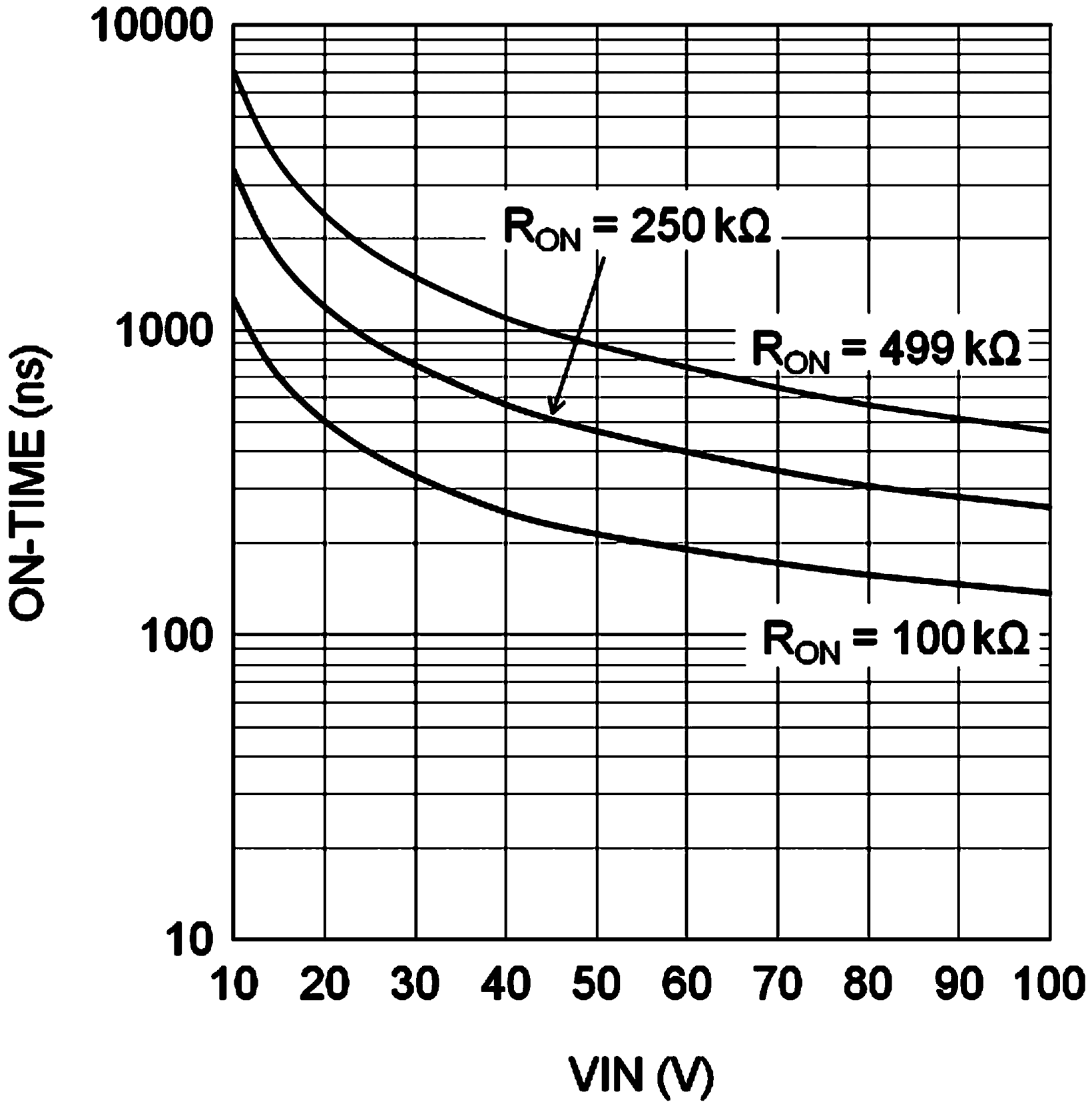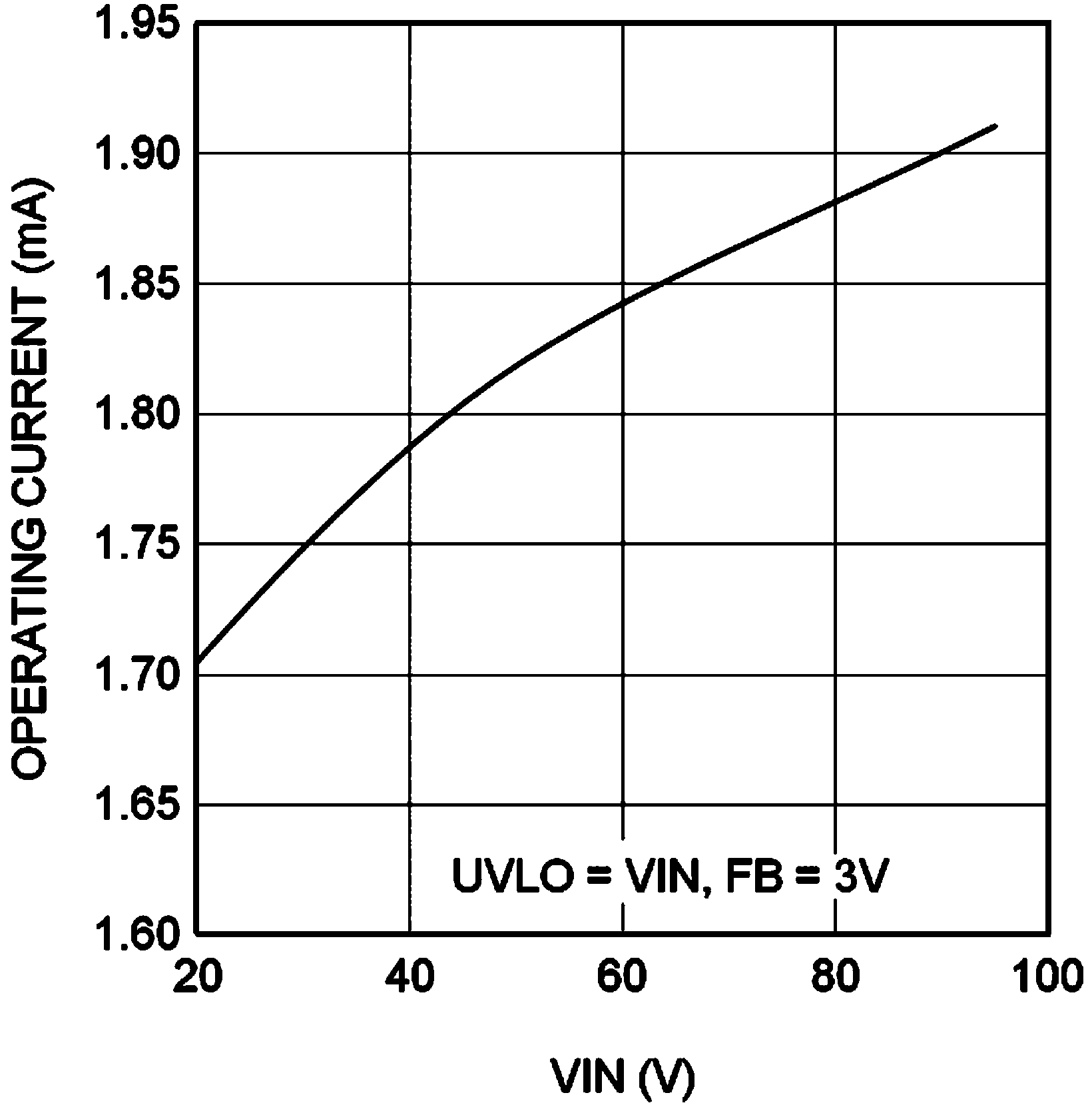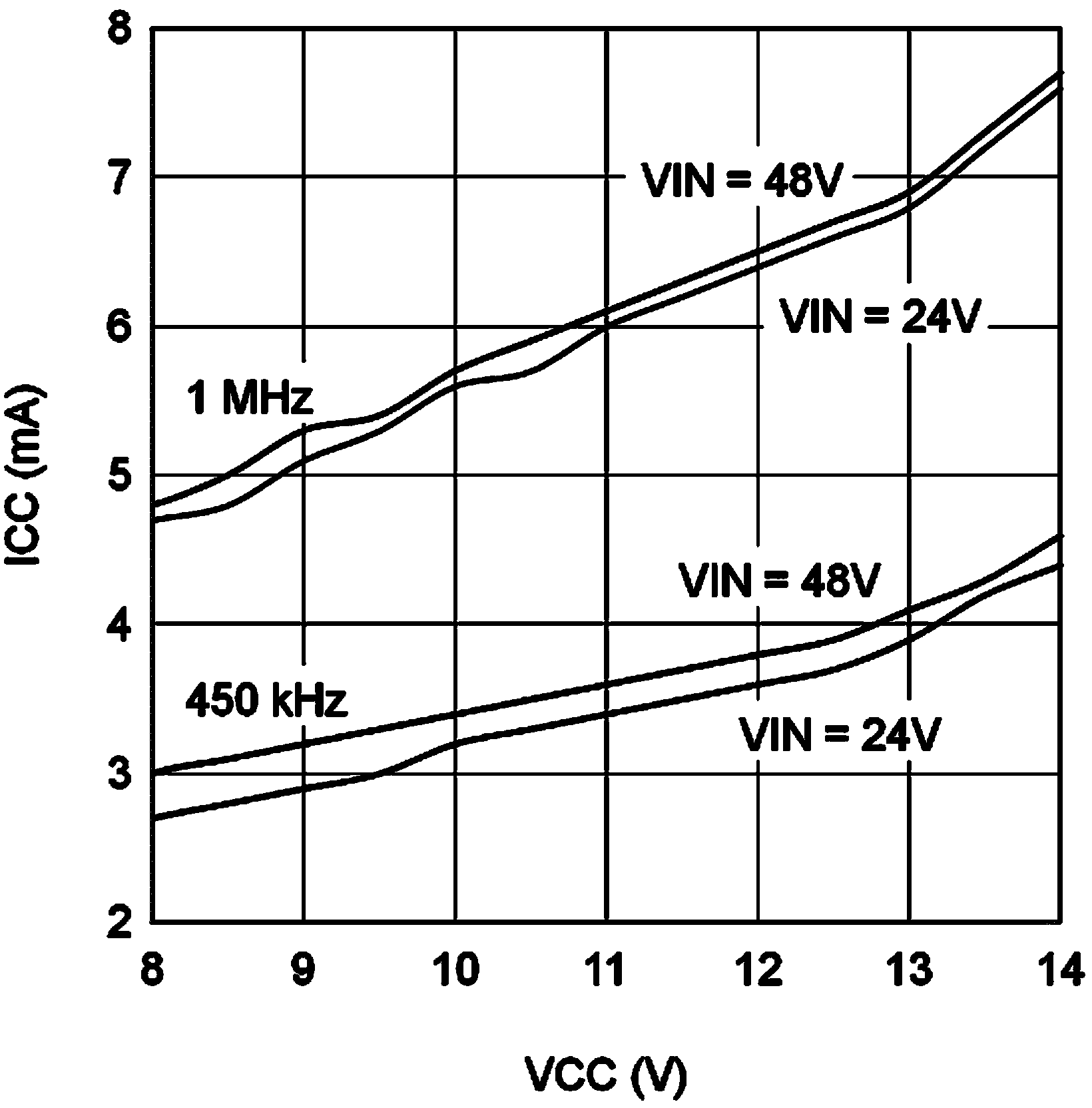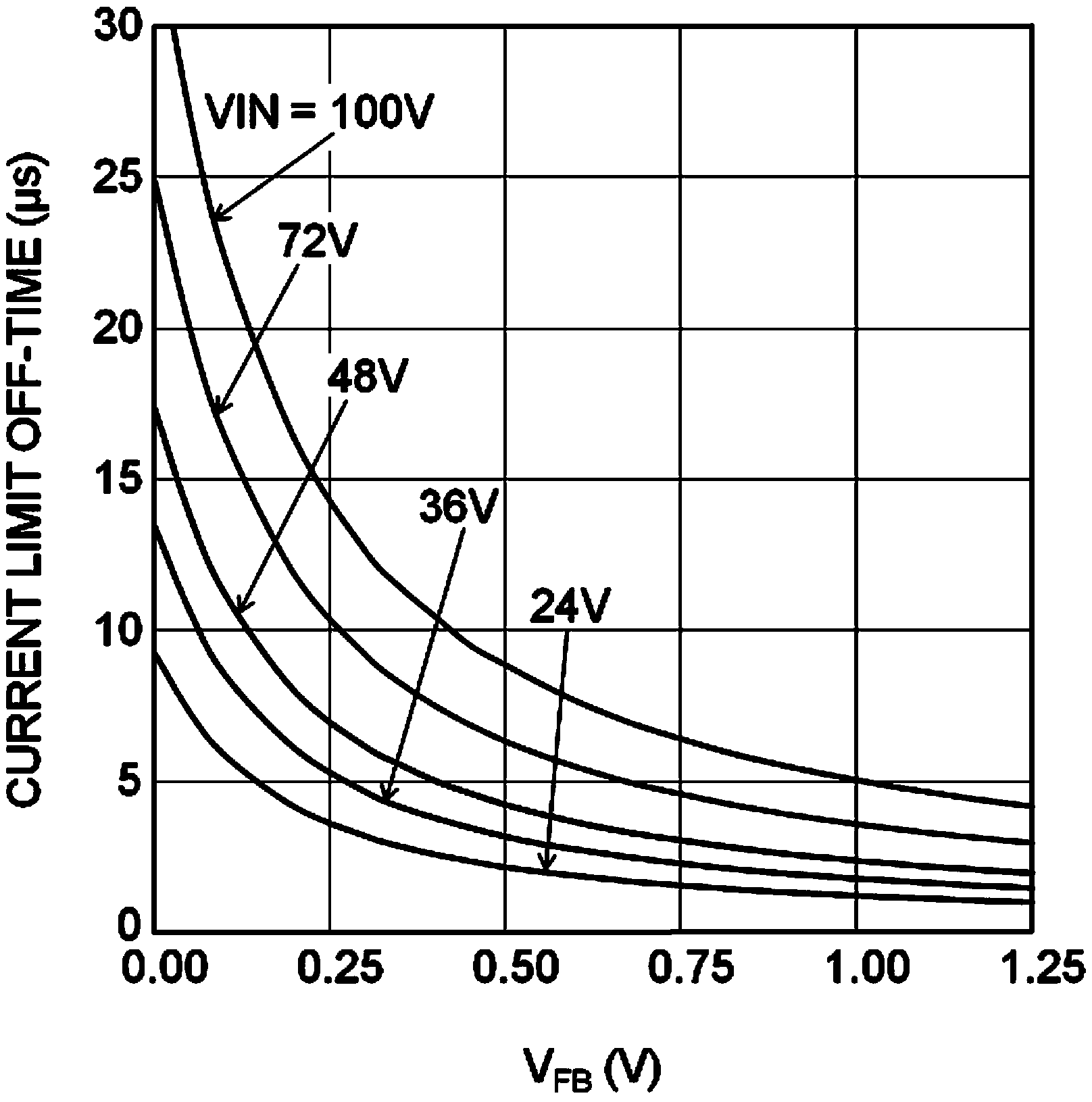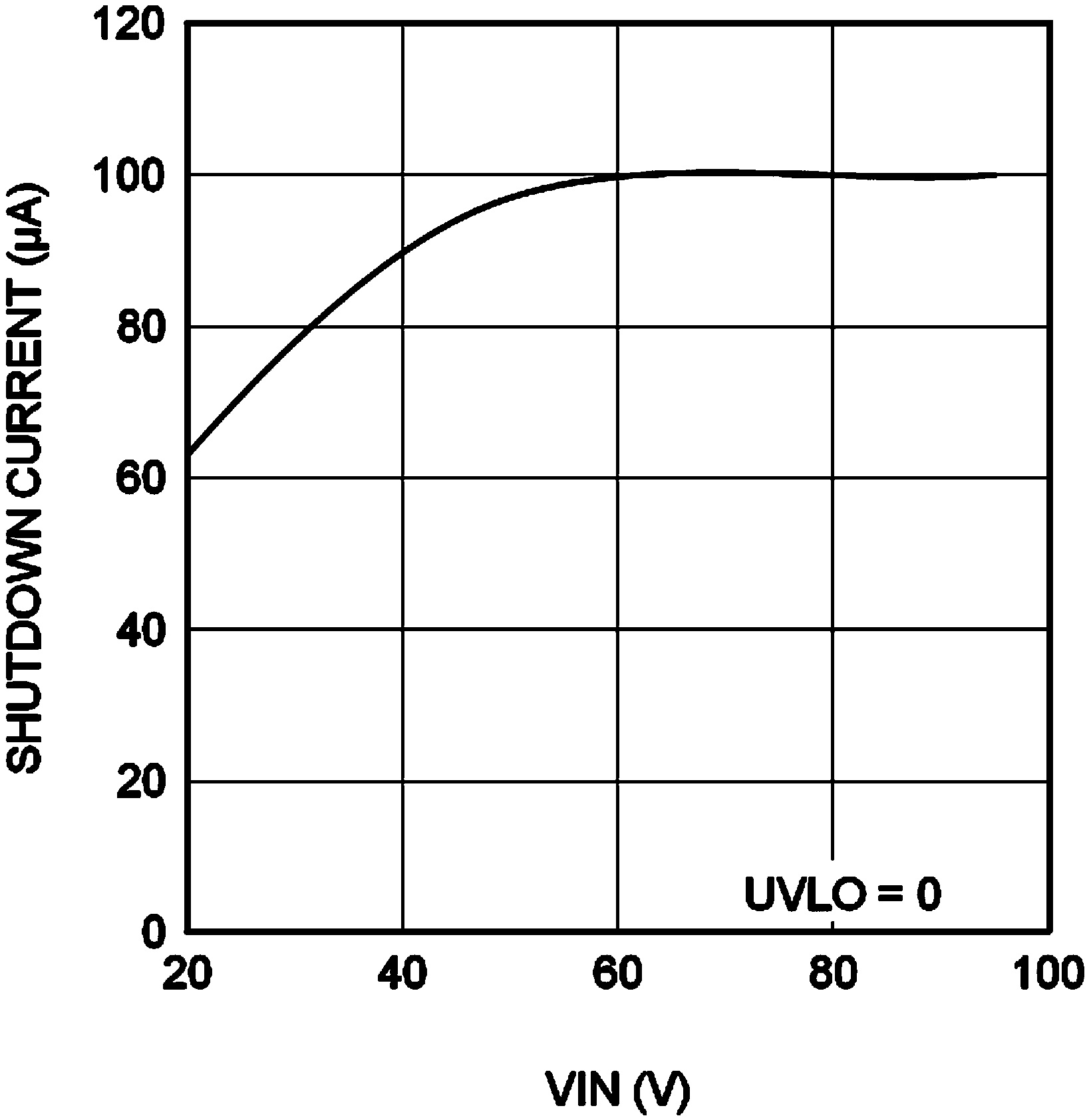SNVS846G June 2012 – November 2017 LM34925
PRODUCTION DATA.
- 1 Features
- 2 Applications
- 3 Description
- 4 Revision History
- 5 Pin Configuration and Functions
- 6 Specifications
-
7 Detailed Description
- 7.1 Overview
- 7.2 Functional Block Diagram
- 7.3
Feature Description
- 7.3.1 Control Overview
- 7.3.2 VCC Regulator
- 7.3.3 Regulation Comparator
- 7.3.4 Overvoltage Comparator
- 7.3.5 On-Time Generator
- 7.3.6 Current Limit
- 7.3.7 N-Channel Buck Switch and Driver
- 7.3.8 Synchronous Rectifier
- 7.3.9 Undervoltage Detector
- 7.3.10 Thermal Protection
- 7.3.11 Ripple Configuration
- 7.3.12 Soft Start
- 7.4 Device Functional Modes
-
8 Application and Implementation
- 8.1 Application Information
- 8.2
Typical Application
- 8.2.1
Application Circuit: 20-V to 95-V Input and 10-V, 100-mA Output Isolated Fly-Buck Converter
- 8.2.1.1 Design Requirements
- 8.2.1.2
Detailed Design Procedure
- 8.2.1.2.1 Transformer Turns Ratio
- 8.2.1.2.2 Total IOUT
- 8.2.1.2.3 RFB1, RFB2
- 8.2.1.2.4 Frequency Selection
- 8.2.1.2.5 Transformer Selection
- 8.2.1.2.6 Primary Output Capacitor
- 8.2.1.2.7 Secondary Output Capacitor
- 8.2.1.2.8 Type III Feedback Ripple Circuit
- 8.2.1.2.9 Secondary Diode
- 8.2.1.2.10 VCC and Bootstrap Capacitor
- 8.2.1.2.11 Input Capacitor
- 8.2.1.2.12 UVLO Resistors
- 8.2.1.2.13 VCC Diode
- 8.2.2 Application Curves
- 8.2.1
Application Circuit: 20-V to 95-V Input and 10-V, 100-mA Output Isolated Fly-Buck Converter
- 9 Power Supply Recommendations
- 10Layout
- 11Device and Documentation Support
- 12Mechanical, Packaging, and Orderable Information
パッケージ・オプション
メカニカル・データ(パッケージ|ピン)
サーマルパッド・メカニカル・データ
- DDA|8
発注情報
6 Specifications
6.1 Absolute Maximum Ratings(1)
| MIN | MAX | UNIT | |
|---|---|---|---|
| VIN, UVLO to RTN | –0.3 | 100 | V |
| SW to RTN | –1.5 | VIN + 0.3 | V |
| SW to RTN (100-ns transient) | –5 | VIN + 0.3 | V |
| BST to VCC | 100 | V | |
| BST to SW | 13 | V | |
| RON to RTN | –0.3 | 100 | V |
| VCC to RTN | –0.3 | 13 | V |
| FB to RTN | –0.3 | 5 | V |
| Maximum junction temperature(2) | 150 | °C | |
| Storage temperature Tstg | –55 | 150 | °C |
(1) Absolute Maximum Ratings are limits beyond which damage to the device may occur. Recommended Operating Conditions are conditions under which operation of the device is intended to be functional. For verified specifications and test conditions, see the Electrical Characteristics. The RTN pin is the GND reference electrically connected to the substrate.
(2) High junction temperatures degrade operating lifetimes. Operating lifetime is de-rated for junction temperatures greater than 125°C.
6.2 ESD Ratings
| MIN | MAX | UNIT | |||
|---|---|---|---|---|---|
| V(ESD) | Electrostatic discharge | Human body model (HBM), per ANSI/ESDA/JEDEC JS-001, all pins(1) | 2 | kV | |
| Charged device model (CDM), per JEDEC specification JESD22-C101, all pins(2) | 750 | V | |||
(1) JEDEC document JEP155 states that 500-V HBM allows safe manufacturing with a standard ESD control process.
(2) JEDEC document JEP157 states that 250-V CDM allows safe manufacturing with a standard ESD control process.
6.3 Recommended Operating Conditions
over operating free-air temperature range (unless otherwise noted)(1)| MIN | MAX | UNIT | |
|---|---|---|---|
| VIN voltage | 7.5 | 100 | V |
| Operating junction temperature(1) | –40 | 125 | °C |
(1) High junction temperatures degrade operating lifetimes. Operating lifetime is de-rated for junction temperatures greater than 125°C.
6.4 Thermal Information
| THERMAL METRICS(1) | LM34925 | UNIT | |||
|---|---|---|---|---|---|
| NGU | DDA | ||||
| 8 PINS | |||||
| RθJA | Junction-to-ambient thermal resistance | 41.3 | 41.1 | °C/W | |
| RθJCbot | Junction-to-case (bottom) thermal resistance | 3.2 | 2.4 | °C/W | |
| ΨJB | Junction-to-board thermal characteristic parameter | 19.2 | 24.4 | °C/W | |
| RθJB | Junction-to-board thermal resistance | 19.1 | 30.6 | °C/W | |
| RθJCtop | Junction-to-case (top) thermal resistance | 34.7 | 37.3 | °C/W | |
| ΨJT | Junction-to-top thermal characteristic parameter | 0.3 | 6.7 | °C/W | |
(1) For more information about traditional and new thermal metrics, see the IC Package Thermal Metrics application report (SPRA953).
6.5 Electrical Characteristics
Typical values correspond to TJ = 25°C. Minimum and maximum limits apply over –40°C to 125°C junction temperature range, unless otherwise stated. VIN = 48 V unless otherwise stated. (see(1)).| PARAMETER | TEST CONDITIONS | MIN | TYP | MAX | UNIT | |
|---|---|---|---|---|---|---|
| VCC SUPPLY | ||||||
| VCC Reg | VCC Regulator Output | VIN = 48 V, ICC = 20 mA | 6.25 | 7.6 | 8.55 | V |
| VCC Current Limit | VIN = 48 V(2) | 26 | mA | |||
| VCC UVLO Threshold (VCC Increasing) |
–40°C ≤ TJ ≤ 125°C | 4.15 | 4.5 | 4.9 | V | |
| VCC UVLO Hysteresis | 300 | mV | ||||
| VCC Drop Out Voltage | VIN = 8 V, ICC = 20 mA | 2.3 | V | |||
| IIN Operating Current | Non-switching, FB = 3 V | 1.75 | mA | |||
| IIN Shutdown Current | UVLO = 0 V | 50 | 225 | µA | ||
| SWITCH CHARACTERISTICS | ||||||
| Buck Switch RDS(ON) | ITEST = 100 mA, BST-SW = 7 V | 0.8 | 1.8 | Ω | ||
| Synchronous RDS(ON) | ITEST = 200 mA | 0.45 | 1 | Ω | ||
| Gate Drive UVLO | VBST − VSW Rising | 2.4 | 3 | 3.6 | V | |
| Gate Drive UVLO Hysteresis |
260 | mV | ||||
| UNDERVOLTAGE SENSING FUNCTION | ||||||
| UV Threshold | UV Rising | 1.19 | 1.225 | 1.26 | V | |
| UV Hysteresis Input Current | UV = 2.5 V | –10 | –20 | –29 | µA | |
| Remote Shutdown Threshold | Voltage at UVLO falling | 0.32 | 0.66 | V | ||
| Remote Shutdown Hysteresis | 110 | mV | ||||
| REGULATION AND OVERVOLTAGE COMPARATORS | ||||||
| FB Regulation Level | Internal reference trip point for switch ON | 1.2 | 1.225 | 1.25 | V | |
| FB Overvoltage Threshold | Trip point for switch OFF | 1.62 | V | |||
| FB Bias Current | 60 | nA | ||||
| CURRENT LIMIT | ||||||
| Current Limit Threshold | 150 | 270 | 370 | mA | ||
| Current Limit Response Time | Time to switch off | 150 | ns | |||
| OFF-Time Generator (Test 1) | FB = 0.1 V, VIN = 48 V | 12 | µs | |||
| OFF-Time Generator (Test 2) | FB = 1 V, VIN = 48 V | 2.5 | µs | |||
| THERMAL SHUTDOWN | ||||||
| Tsd | Thermal Shutdown Temperature | 165 | °C | |||
| Thermal Shutdown Hysteresis | 20 | °C | ||||
(1) All limits are verified by design. All electrical characteristics having room temperature limits are tested during production at TA = 25°C. All hot and cold limits are verified by correlating the electrical characteristics to process and temperature variations and applying statistical process control.
(2) VCC provides self bias for the internal gate drive and control circuits. Device thermal limitations limit external loading.
6.6 Switching Characteristics
Typical values correspond to TJ = 25°C. Minimum and maximum limits apply over –40°C to 125°C junction temperature range unless otherwise stated. VIN = 48 V unless otherwise stated.| PARAMETER | TEST CONDITIONS | MIN | TYP | MAX | UNIT | |
|---|---|---|---|---|---|---|
| ON-TIME GENERATOR | ||||||
| TON Test 1 | VIN = 32 V, RON = 100 kΩ | 270 | 350 | 460 | ns | |
| TON Test 2 | VIN = 48 V, RON = 100 kΩ | 188 | 250 | 336 | ns | |
| TON Test 3 | VIN = 75 V, RON = 250 kΩ | 250 | 370 | 500 | ns | |
| TON Test 4 | VIN = 10 V, RON = 250 kΩ | 1880 | 3200 | 4425 | ns | |
| MINIMUM OFF-TIME | ||||||
| Minimum Off-Timer | FB = 0 V | 144 | ns | |||
